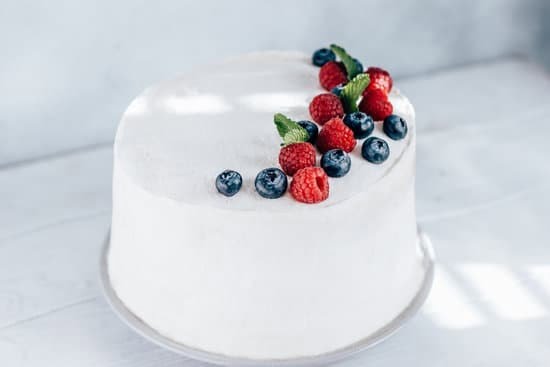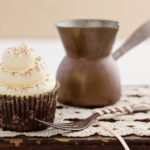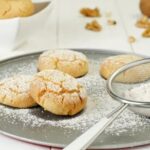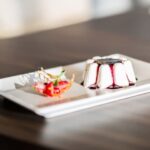Are you ready to take your cake baking skills to the next level? In this article, we will show you how to frost and decorate a cake like a pro.
A well-frosted and beautifully decorated cake can be the centerpiece of any celebration, making it not only delicious but visually stunning. Whether you’re a beginner looking to learn the basics or an experienced baker wanting to enhance your skills, this step-by-step guide will provide you with all the tips and techniques you need.
Before we dive into the step-by-step process of frosting and decorating a cake, it’s important to gather all the necessary tools and ingredients. From spatulas and piping bags to high-quality frosting and edible decorations, having the right supplies is essential for achieving professional-looking results. We’ll also provide expert tips for selecting the best tools and ensuring that your ingredients are of the highest quality.
Once you have everything you need, we will guide you through preparing your cake for frosting and decorating. From leveling the cake layers to applying a crumb coat, these crucial steps will ensure that your finished product looks polished and perfect. So let’s get started on creating a beautiful masterpiece that not only tastes amazing but looks absolutely stunning.
Gathering the Necessary Tools and Ingredients
Essential Tools
Before starting the process of frosting and decorating a cake, it is important to gather all the necessary tools. Some essential tools include offset spatulas for spreading the frosting, a bench scraper for smoothing the frosting, piping bags and tips for decorative frosting, and a turntable to easily spin the cake while decorating. It’s also helpful to have a cake leveler to ensure even layers and a cake stand or platter for presentation.
High-Quality Ingredients
In addition to the right tools, using high-quality ingredients is crucial for successful cake frosting and decorating. The main ingredient, of course, is the cake itself. Using a moist and flavorful cake recipe will provide a solid foundation for adding frosting and decorations. When it comes to frosting, using real butter instead of margarine will result in a richer flavor and smoother texture.
Tips for Selection
When choosing tools and ingredients, consider their quality and suitability for the specific type of cake being made. For example, if making a layered cake that requires even layers, invest in a good quality cake leveler to ensure an even surface for frosting. Similarly, if planning intricate decorative designs on the cake, select piping tips that can achieve the desired look. When selecting ingredients such as food coloring or edible decorations, opt for products made with natural ingredients whenever possible.
By gathering high-quality tools and ingredients, you are setting yourself up for success when it comes to how to frost and decorate a cake. These fundamental steps lay the groundwork before moving on to preparing the cake for frosting and decoration.
Preparing the Cake for Frosting and Decorating
Once you have gathered all the necessary tools and ingredients for frosting and decorating a cake, the next step is to prepare the cake itself. Properly preparing the cake will ensure that it provides a solid foundation for the frosting and decorations, resulting in a beautifully finished product.
First, it’s important to level the cake layers to create an even surface for frosting. To do this, you will need a long serrated knife or a cake leveler. Carefully slice off any domed tops or uneven areas to create a flat, uniform shape. This step is crucial for achieving a professional-looking final result.
After leveling the cake layers, it’s time to apply a crumb coat. A crumb coat is a thin layer of frosting that seals in any loose crumbs on the cake’s surface, preventing them from showing through the final layer of frosting.
To apply a crumb coat, spread a thin layer of frosting over the entire cake and then refrigerate it until the frosting has set. This step creates a smooth base for adding the final layer of frosting and decorations.
Finally, be sure to place your prepared cake on a sturdy cake board or serving platter before proceeding with frosting and decorating. This will make it easier to transport and display your finished creation once it’s complete.
By following these preparations carefully, you’ll be well on your way to mastering how to frost and decorate a cake like a pro.
Choosing and Applying the Right Frosting
When it comes to frosting a cake, the type of frosting you choose can make a big difference in both taste and appearance. There are several different types of frosting to consider, each with its own unique characteristics and uses. Buttercream frosting is a popular choice for its creamy texture and versatility, while cream cheese frosting offers a tangy twist that pairs well with certain cake flavors. Fondant is another option for creating a smooth, glossy finish on cakes.
Once you’ve chosen the right frosting for your cake, the next step is learning how to apply it properly. For buttercream and cream cheese frostings, using an offset spatula or bench scraper will help create a smooth finish on the cake’s surface.
It’s important to start with a crumb coat-a thin layer of frosting that seals in any loose crumbs-to ensure the final layer goes on cleanly. If you’re working with fondant, be sure to roll it out to an even thickness before draping it over the cake and smoothing out any wrinkles or air bubbles.
As with any new skill, practice makes perfect when it comes to applying frosting. Don’t be discouraged if your first attempts aren’t flawless-keep experimenting with different techniques until you find what works best for you. And remember, the most important thing is that your cake tastes delicious, so don’t stress too much about achieving absolute perfection in your decoration.
| Types of Frosting | Uses |
|---|---|
| Buttercream | Versatile and easy to work with; ideal for piping decorations |
| Cream Cheese | Tangy flavor pairs well with red velvet or carrot cakes |
| Fondant | Creates a smooth, professional finish on cakes |
Techniques for Decorative Frosting
Decorative frosting is an essential part of making a cake not only taste delicious but also look visually appealing. Whether you’re creating borders, flowers, or intricate designs, the right techniques can elevate your cake from homemade to professional-quality. Here’s a step-by-step guide on how to master the art of decorative frosting for your next cake masterpiece.
First and foremost, it’s important to have the right tools for piping and decorating your cake. Here are some essential tools you’ll need:
When it comes to decorative frosting techniques, piping is one of the most common methods used to create beautiful designs on a cake. Here are some basic piping techniques that you can use:
1. Borders: Use a round or star tip to create simple borders around the top and bottom edges of the cake.
2. Flowers: Depending on the type of flower you want to create, use a petal or round tip to pipe flowers directly onto the cake.
3. Intricate designs: For more elaborate designs, experiment with different tips and piping techniques to create patterns and shapes onto the surface of the cake.
In addition to piping techniques, creating texture with frosting can add depth and visual interest to your cake. You can achieve texture by using different tools such as combs, brushes, or even stencils. Experiment with various textures to find what best complements your design and enhances the overall look of the cake.
Mastering these decorative frosting techniques will take practice and patience but with time and dedication anyone can learn how to frost and decorate a beautiful cake like a pro.
Adding Edible Decorations
Once you have successfully applied the frosting to your cake, it’s time to take your decorating skills to the next level by adding edible decorations. Edible decorations not only add visual appeal but also provide an extra layer of taste and texture to your cake. Whether you’re aiming for a simple and elegant look or a more elaborate and festive design, edible decorations can help you achieve the desired effect.
Suggestions for Edible Decorations
When it comes to edible decorations, the options are endless. You can choose from a wide variety of sprinkles, edible pearls, chocolate shavings, fresh fruit, edible flowers, and more. It’s essential to consider the overall theme and flavor profile of your cake when selecting your decorations. For example, if you’re making a chocolate cake, chocolate shavings or cocoa powder dusting could be an excellent choice for decoration.
Techniques for Applying Edible Decorations
Once you’ve chosen your edible decorations, it’s important to know how to apply them effectively to the cake. For items like sprinkles and pearls, simply sprinkle them over the frosted surface of the cake. As for fresh fruit and flowers, carefully place them on top of the frosting in a visually appealing arrangement. It’s crucial to handle delicate decorations with care so as not to damage them while placing them on the cake.
Overall, adding edible decorations is an opportunity for creativity and personalization in your cake decorating process. Experiment with different combinations of decorations and techniques until you achieve the perfect look for your masterpiece. By following these suggestions and using your imagination, you can create a beautifully decorated cake that will impress any crowd at your next gathering or celebration.
Creating a Beautiful Presentation
After putting in the effort to frost and decorate a cake, it’s important to ensure that the presentation is just as appealing as the design itself. Creating a beautiful presentation for your cake can elevate the overall experience of enjoying it. Whether you’re serving the cake at a special occasion or simply want to impress your family and friends, the presentation plays a key role in the enjoyment of the dessert.
When it comes to presenting a cake, choosing the right serving platter or cake stand is essential. The size and style of the platter should complement the design of the cake. For example, a simple, elegant cake may look best on a sleek white cake stand, while a more elaborate and colorful cake could be showcased on a vibrant floral-patterned platter.
To further enhance the visual appeal of the cake, consider adding some final touches to the presentation. Fresh fruit like berries or slices of citrus fruits can add color and vibrancy to the display. Alternatively, edible flowers can bring an elegant and delicate touch to the arrangement. Another option is to dust powdered sugar or cocoa powder over the top of the cake for an added decorative element.
Ultimately, creating a beautiful presentation for your frosted and decorated cake adds that extra special touch that will leave a lasting impression on those who get to enjoy it. Don’t underestimate how much the way you present your creation can elevate not just its appearance but also its overall appeal.
Troubleshooting Common Issues
Frosting and decorating a cake can be a fun and rewarding experience, but it’s not without its challenges. From runny frosting to decorations that just won’t stick, there are a number of common issues that you may encounter when working on your cake masterpiece.
One common problem that many bakers face is frosting that is too thin or runny. This can make it difficult to achieve smooth, even coverage on the cake. To fix this issue, try adding additional powdered sugar to thicken the frosting. You can also chill the frosting for a few minutes to help it set up before applying it to the cake.
Another common issue is decorations that won’t stay in place. Whether you’re working with sprinkles, edible pearls, or other decorative elements, getting them to stick to the cake can be tricky. One solution is to lightly moisten the area where you want to place the decoration with a small amount of water or simple syrup. This will help the decoration adhere to the cake more effectively.
Finally, if you find that your cake layers are uneven or lopsided, it can be challenging to achieve a polished final look. To combat this issue, consider investing in a cake leveler or using toothpicks and a serrated knife to carefully trim any uneven areas on the cake layers before applying the crumb coat.
In summary, even experienced bakers may encounter issues when frosting and decorating a cake. However, with a few simple tips and tricks, you can troubleshoot common problems and ensure that your finished creation looks as beautiful as it tastes.
| Common Issue | Solution |
|---|---|
| Frosting too thin | Add powdered sugar or chill frosting |
| Decorations won’t stick | Moisten area with water or simple syrup |
| Uneven cake layers | Invest in a cake leveler or carefully trim with toothpicks and knife |
Conclusion
Frosting and decorating a cake can seem like a daunting task, but with the right tools and techniques, it can be a fun and rewarding experience. By following the step-by-step guide provided in this article, you can create a beautifully frosted and decorated cake that will impress your friends and family.
Firstly, make sure you have all the necessary tools and ingredients on hand before you begin. Quality ingredients and the right tools can make a huge difference in the outcome of your cake. Take the time to select high-quality frosting and decorations that will elevate the overall look and taste of your creation.
Once you have prepared your cake for frosting, it’s important to choose the right type of frosting for your desired result. Whether it’s buttercream, cream cheese, or fondant, each type of frosting has its own unique texture and flavor profile. Be sure to follow the step-by-step guide for applying the chosen frosting to ensure an even and smooth finish.
In addition to choosing the right frosting, mastering decorative techniques such as piping borders or creating intricate designs with frosting can take your cake to the next level. Don’t be afraid to get creative with edible decorations like sprinkles, edible pearls, or chocolate shavings.
Finally, arranging the cake on a serving platter or stand and garnishing it with fresh fruit or edible flowers will complete your beautiful presentation. With these tips in mind, you’ll be well-equipped to frost and decorate a stunning cake for any occasion.
Related Recipes and Resources
In conclusion, mastering the art of frosting and decorating a cake can truly elevate your baking skills and impress your friends and family. By following the step-by-step process outlined in this article, you can create a beautifully decorated cake that is sure to be a showstopper at any event. From gathering the necessary tools and ingredients to choosing the right frosting and applying decorative elements, each stage plays a crucial role in achieving a stunning final result.
The tips provided for troubleshooting common issues ensure that even if something goes wrong during the process, you have the knowledge and resources to rectify any problems. By taking the time to select high-quality ingredients and tools, as well as carefully following the techniques for frosting and decorating, you can create a cake that not only looks amazing but tastes delicious too.
Frequently Asked Questions
How Do You Frost a Cake for Decorating?
Frosting a cake for decorating begins with a crumb coat to seal in the crumbs and create a smooth surface. Then, apply a thick layer of frosting and use a spatula or bench scraper to create an even finish.
How Do You Make a Cake Look Professional?
Making a cake look professional involves using tools such as piping bags, tips, and offset spatulas to create neat and precise decorations. It’s important to work with clean lines, smooth surfaces, and well-balanced designs.
Do You Frost the Top or Sides of a Cake First?
When frosting a cake, it’s best to start with the top before moving on to the sides. This helps create an even base layer on top of the cake, which can then be smoothly transitioned onto the sides for a professional-looking finish.

Welcome to our cake decorating blog! My name is Destiny Flores, and I am the proud owner of a cake decorating business named Cake Karma. Our mission is to provide delicious, beautiful cakes for all occasions. We specialize in creating custom cakes that are tailored specifically to each customer’s individual needs and tastes.





